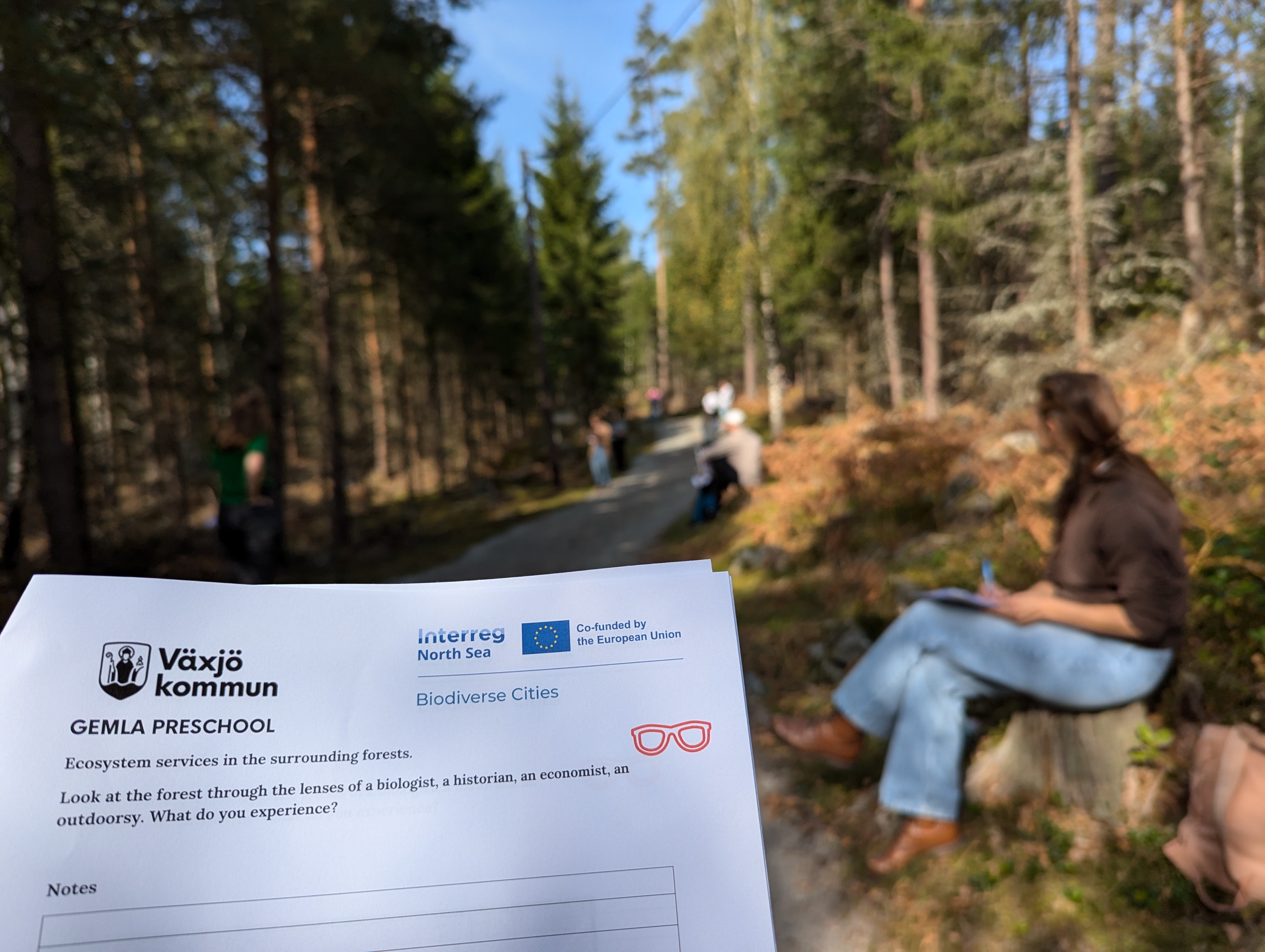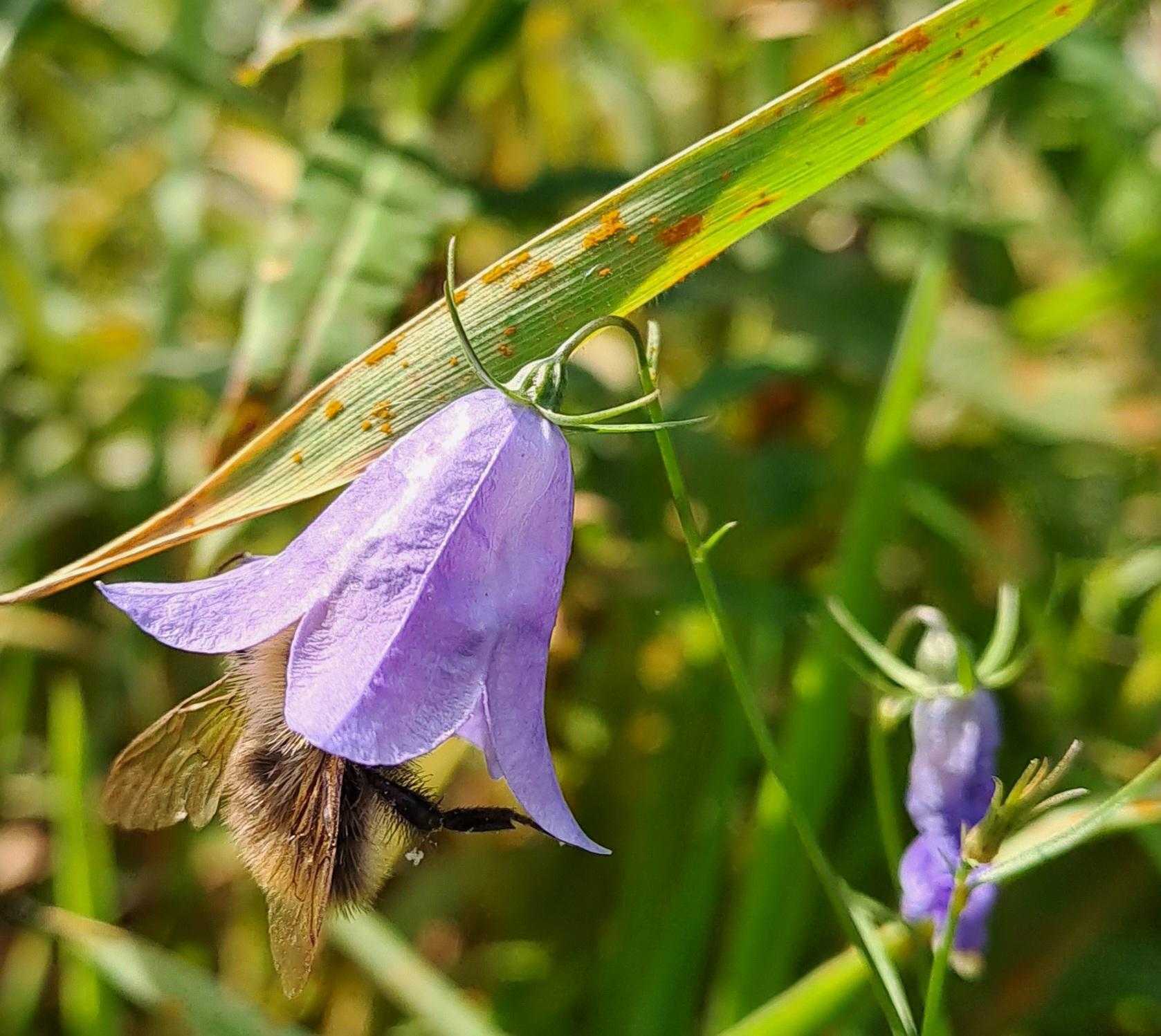The Biodiverse Cities project landed in Växjö for the fifth partner meeting, following Carl Linnaeus’s footsteps through the Småland landscape. During the meeting, we took a closer look at Växjö’s pilots and learned about the cities’ work with greening urban planning processes.
Temporary experimentation sprints in the green city
Växjö opened the meeting by presenting their innovative approaches to urban greening and their commitment to sustainability. Växjö has been named the greenest city in Europe and won the European Green Leaf Award in 2018 for its commitment to sustainable development. Sofia and Malena, our hosts, shared insights into how to mainstream biodiversity (NBS/ESS) in city decision-making across departments and investment. The first day concluded with a tour of Växjö’s first “Summer Street,” a temporary green, car-free space co-designed with the local community. This pilot, installed between May and September, is a testament to the power of community engagement, especially with the active involvement of local schoolchildren in its planning and design.

Pilot visits using ecosystem service glasses
An in-depth study visit took place by bus on the second day. The first stop was Gemla Preschool, one of Växjö’s pilots. Here, the preschool's principal described how the preschool's employees engaged in co-design to present their thoughts about nature-based solutions. Växjö has looked at the issues and needs of the preschool and asked themselves: what needs in a preschool yard can be solved through nature-based solutions? And how does it benefit the activities and the children's learning?
The group’s second stop of the day was Växjö’s other pilot; the Telestadshöjden’s wetland area. Here, we took a close-to-nature walk through bushes and thickets, exploring the area's nature and wildlife. The wetland has a high potential for biodiversity and many other ecosystem services linked to climate adaptation and recreation.
Something that permeated both study visits was an exercise with different “ecosystem service glasses”. We viewed the pilots through different ecosystem services perspectives: as an ecologist, economist, historian, and outdoor enthusiast. The experience gave us an understanding of the multiple benefits these green spaces offer. We pondered on what services different types of landscapes and forests deliver, and how it affects the development of our cities. We also compared production forests with nature reserves, gaining insight into the balance between economic use and biodiversity preservation.

Knowledge exchange across themes and formats
The group spent the three days sharing and exchanging knowledge, hosting a total of four Transnational Peer Learning (TPL) sessions. Amongst many interesting work sessions, the city session on learnings and failures of urban greening was held in a Pecha Kucha format - the dynamic presentation style allowed for quick, engaging knowledge sharing.
The group also learned about community-driven spatial experimentation during a TPL session hosted by Open Kaart and Het Vogelnest. We explored how mapping pilot communities can help identify the complex relationships and dynamics that shape urban greening initiatives.
Dordrecht’s Dana Huibers led the group through a TPL session focussing on various initiatives aimed at encouraging private landowners to adopt urban greening practices. She introduced design thinking as a framework for greening private areas, which the group put into practice in an exercise done in smaller grips.

Going beyond Biodiverse Cities
As the meeting drew to a close, the partnership did a workshop on capitalisation, focusing on ensuring that the outcomes of the Biodiverse Cities project will continue to generate lasting impacts beyond its completion. We explored strategies for sustaining and growing the project’s influence, ensuring that the work we’ve done up until now - halfway through the project - will leave a meaningful, long-term legacy.
Next stop – Bergen! In May the Biodiverse Cities team will meet a pollinator city and explore how NBS from our pilot cities can be replicated and implemented in cities across the North Sea Region and beyond.

